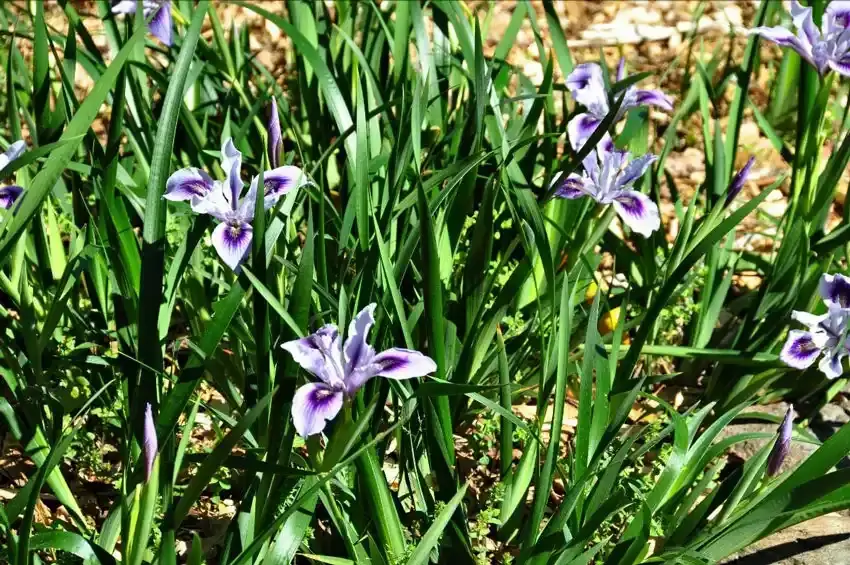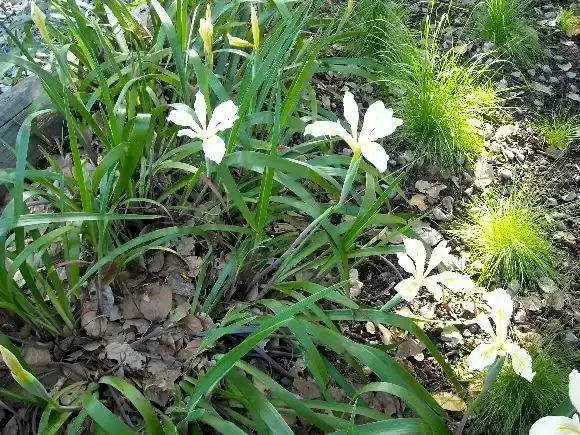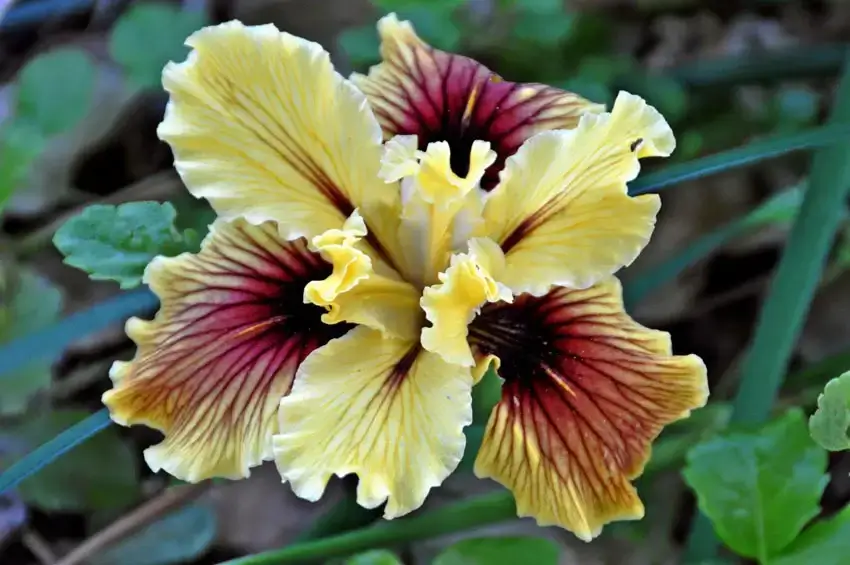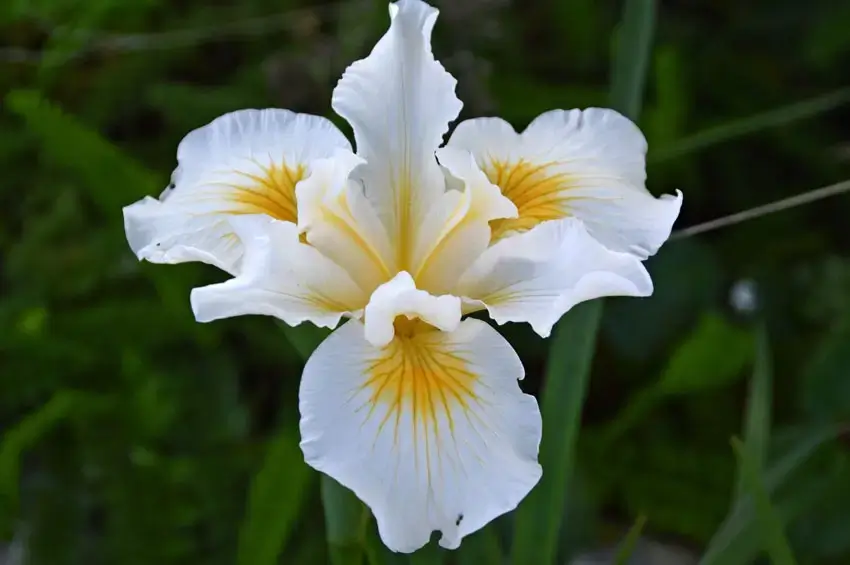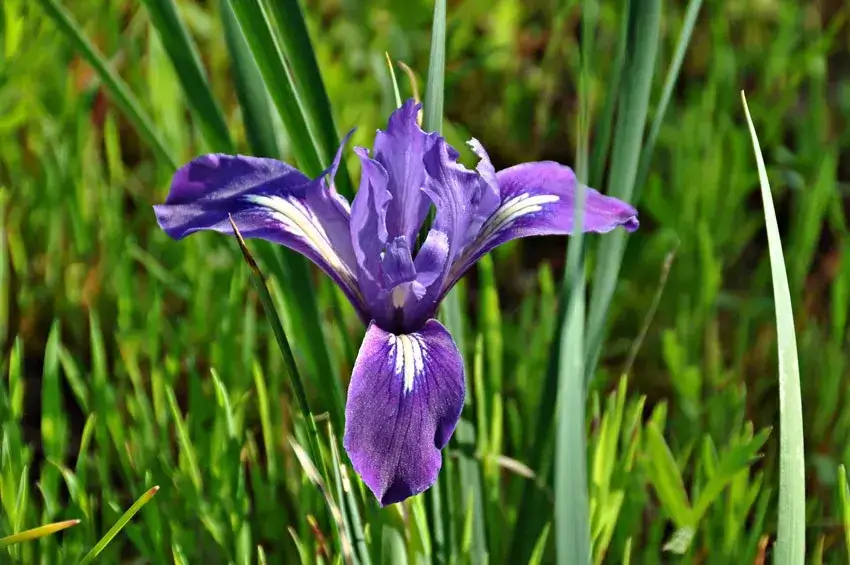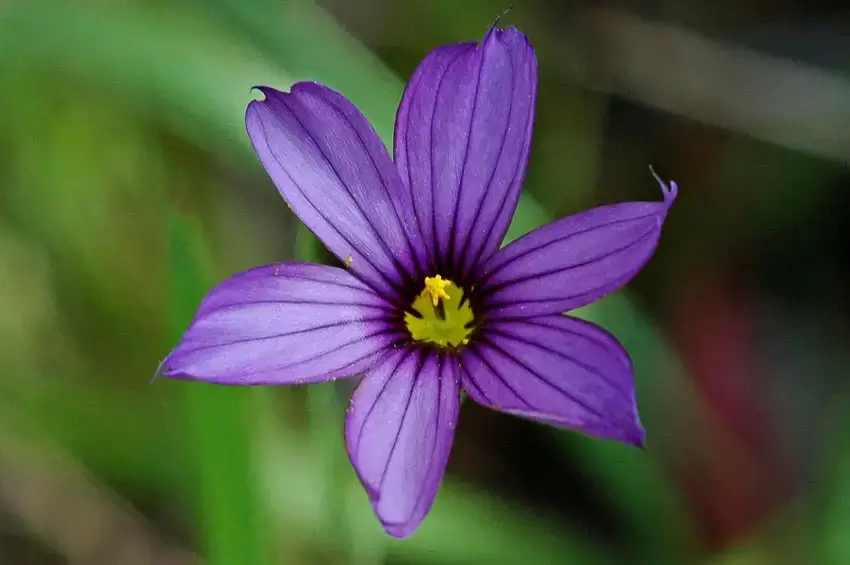Douglas Iris are very special to California – with flowers that are not just beautiful but also easy in garden culture, and totally deer-proof. Iris douglasiana prefer part shade and once established, need nothing but rainwater. In the wild they grow in woodlands, often at the edges of the canopy, or in the sunspots between the tree canopies. Flowers are either various shades of purple, or a creamy white, and are held above the foliage.
Plants are about 18 inches tall with leaves that are evergreen and stay neat even in the dry summers. Plants tend to grow outwards from an inner circle and can be divided every few years. Divisions are best done in November when the new growth is just starting to show.
The beauty of the flowers has inspired a huge variety of ‘Pacific Coast Iris’ hybrids with even more beautiful flowers in a variety of colors and patterned petals. These plants will not grow anywhere else except close to the Pacific Ocean!
In garden culture, Douglas Iris are perfect under our native oaks and combine well with Ferns, Fringecups, Alumroots, and shade-loving shrubs such as Bush Anemone or Coffeeberry. Many of the hybrids are also easy in garden culture, as well as in containers; some are so incredibly beautiful that you may want to create a very special place to show them off!
Another lovely native Iris is the ‘Blue Flag’ or Ground Iris (Iris macrosiphon) which grows in full sun in wild grassy meadows. This is also a tough plant which needs nothing more than what nature provides; but it is a species that is not always amenable to garden culture. If you keep your garden a bit wild, find a spot with good drainage and full sun and let them grow, un-disturbed. The plants die back during the summer, and are best kept dry during the dormant summer season. Over the years Blue Flag Iris can spread and create large patches. Plant them with native bunchgrasses, such as Purple-needle grass (Nasella or Stipa pulchra) and wildflowers.
The flowers are varying shades of deep blues to purples, with lovely markings that guide insects seeking nectar to the source at the base of the petals. These plants are smaller in stature than the Doug Iris, and the flowers are held below the top of the foliage.
Another California native Iris, and the smallest of these three is Blue-eyed Grass (Sisyrinchium bellum). The name is a misnomer in several ways : it is not a grass, but a member of the Lily and Iris families, and the ‘eye’ is golden, but the petals are a beautiful rich deep blue.
This is a delightful small plant, happy in open sunny meadows in the wild, and equally happy in garden culture. The plants die back partially during the dry months; but in the garden with just minimal additional water, will stay in bloom for much of the summer months. Sisyrinchium bellum combines nicely with natives that do better with very low water, such as bunchgrasses. And gardeners can create lovely color combinations by planting Blue-eyed Grasses with yellow Buttercups, pink or white Yarrows, pink or red Coast Buckwheats, or orange Foothill Wallflowers!


